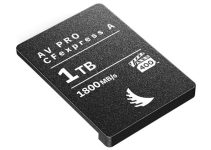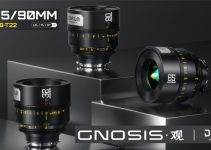Blackmagic has been pushing harder and harder in the short time it has been developing cameras to not only make a system that can capture the best image possible but also to eventually take market dominance in both high-end cinema and commercial production. They’re fighting a good fight and finding a steady footing in their uphill battle against companies like RED and ARRI.
Driving innovation in acquisition and post-production workflows with their turnkey solution, they’ve become the first company ever to control the entire video production pipeline. They make the sensor, the color science, the codec, the camera, and the editing, finishing, and delivery software. But how does all of that effort stack up against the Red Helium 8K?
Threefold pits RED’s finest S35 model up against Blackmagic’s URSA Mini Pro 12K in this detailed mashup that you need to watch if you’re thinking about making the switch.
Blackmagic Ursa Mini 12K Key Features
- 12K Super35 HDR CMOS Sensor
- 12K 17:9 up to 60 fps, DCI 8K to 100 fps
- 14 Stops of Dynamic Range
- User-Changeable PL Lens Mount
- Price: $9,995
Red DSMC2 Helium 8K Key Features
- 35.4 Megapixel CMOS Sensor
- 29.90 mm x 15.77 mm (Diag: 33.80 mm)
- 60 fps at 8K Full Format (8192 × 4320)
- 75 fps at 8K 2.4:1 (8192 × 3456)
- 16.5 Stops of Dynamic Range
- Price: $24,500 (brain only)
Build Quality and Form Factor
The build quality, and form factor of the Ursa Mini 12K is essentially identical to all of the previous generations of Ursa Mini cameras that came before it with a few subtle variations and upgrades. Anyone updating their system from a previous model will be able to use most of the existing accessories with the 12K model.
In general, the build quality of the Ursa Mini cameras is good, but they do incorporate several plastic components and switches that might not survive well in a rugged shooting environment. Red cameras are like little metal tanks that are built for the fast pace environment of a busy set.
The Ursa Mini also has a great form factor for ENG and shoulder mounted shooting, but the body is large and could get unwieldy once you start to really rig it out. The DSMC 2 form factor is built to be rigged up for the task at hand, which is sometimes annoying for shooters who are on the move but can make all of the difference depending on how you’re using it.
Boot-Up Time, and the User Interface
There is no if, and, or but about it, Blackmagic steamrolls over Red when it comes to start times. At just 6 seconds, the Ursa 12K kills the Red Helium’s painfully slow 41 second boot-up.
Red has never been known to have fast start times, and I’m not sure what exactly takes them so long but the general rule of thumb with Red is “don’t shut off the camera once it gets going”.
The User Interface of the Ursa Mini also wins greatly over Red. It is clearly laid out, and extremely responsive. Red should really take note and work to make the user experience a little more enjoyable.
Fan Noise
I’m truncating a lot of what Threefold had to say about these cameras since their comparison is so in-depth, but I made sure to give fan noise it’s own line. Red cameras are pretty noisy little machines until you hit record. Blackmagic really seems to have gotten cooling under control to the point where their camera’s fan doesn’t get progressively louder as the system heats up.
However, it remains to be seen if heat affects the image from the Ursa 12K. Heat can actually cause an increase in image noise and the reason Red cameras are so notoriously loud is that they’re putting image quality first over a few inconveniences like a little fan noise.
It should be noted, though, that pitted side by side the difference is audibly shocking.
Battery Life
Well known to be a battery drainer, I wasn’t surprised to see that Red lost this one either. With both cameras running on the same battery, the Ursa Mini Pro 12K lasted for about 25% longer than the Helium 8K.
Built-In NDs
Column for Column, Red really seems to be losing a lot in this match-up. Red cameras don’t have built-in NDs, period. The Ursa Mini Pro 12K has 4 ND settings: Clear, ND2, ND4, and ND6. It’s enough to make minor adjustments but falls far short of allowing you to film wide open on a sunny day. It’s very nice to have them onboard though.
BRAW vs R3D
According to the review, there is no clear advantage to filming in BRAW over R3D or vice versa accept the BRAW plays back very well in Resolve and Blackmagic has a variable bit-rate (Constant Quality) setting and Red only has a fixed bit-rate codec.
The quality of BRAW seems to be very good, but the consistency of R3D is what keeps large scale productions fixed to the Red ecosystem. BRAW is still very new and I have yet to see many commercial production companies embrace it.
BRAW is also the ONLY codec available on the Ursa 12K. The Red Helium can shoot in R3D and ProRes.
Image Quality
Despite the increased pixel count, the image from the Ursa 12K doesn’t appear as sharp as the image from the Red Helium 8K. As you can see from the test footage, there seems to be a little more detail in the 8K footage from the Helium than what they’re getting from the URSA 12K. This is more than likely based on how BM is processing that signal into the BRAW codec.
Summing Up the Remainder
Red has been around for a while, and although their equipment is a little more expensive the key component to Red is that is it serviceable. They are a US-based company, and are quick to fix issues to get you back to shooting as quick as possible.
Additionally, there is an always-expanding list of 3rd party components available that work with Red and the company seems very open to working with and approving 3rd party products.
Blackmagic is one of the new, market disruptors in the camera world, and although their products are very affordable and offer a lot of eye-catching features it remains to be seem what the longevity of their cameras will be.
As the reviewer stated, the Helium 8K in this comparison has been their A camera for 4 years. In that same timeframe, Blackmagic introduced the Ursa Mini, Ursa Mini Pro, Ursa Mini Pro G2, and now the Ursa Mini Pro 12K. With every update, the price of the previous camera is slashed and the serviceability of the previous model falls into question.
I really enjoy the quality and usability of Blackmagic’s cameras, and I love DaVinci Resolve. Speaking strictly from a business standpoint, once the prices of their cameras start to climb around $10k, I start to get cautious. If I don’t need 8K or 12K, I might just wait it out until 2022 and pick one up used for half price.
[source: Threefold]
B&H Order Links:
Blackmagic Design URSA Mini Pro 12K (PL)
RED DIGITAL CINEMA DSMC2 BRAIN with HELIUM 8K S35 Sensor
Disclaimer: As an Amazon Associate partner and participant in B&H and Adorama Affiliate programmes, we earn a small comission from each purchase made through the affiliate links listed above at no additional cost to you.




